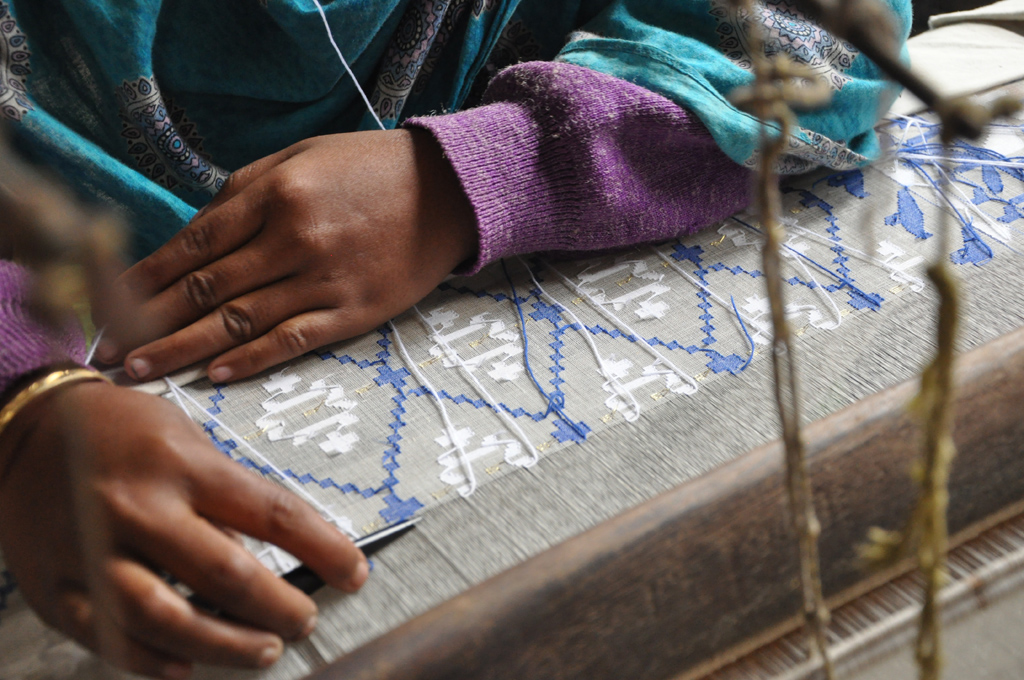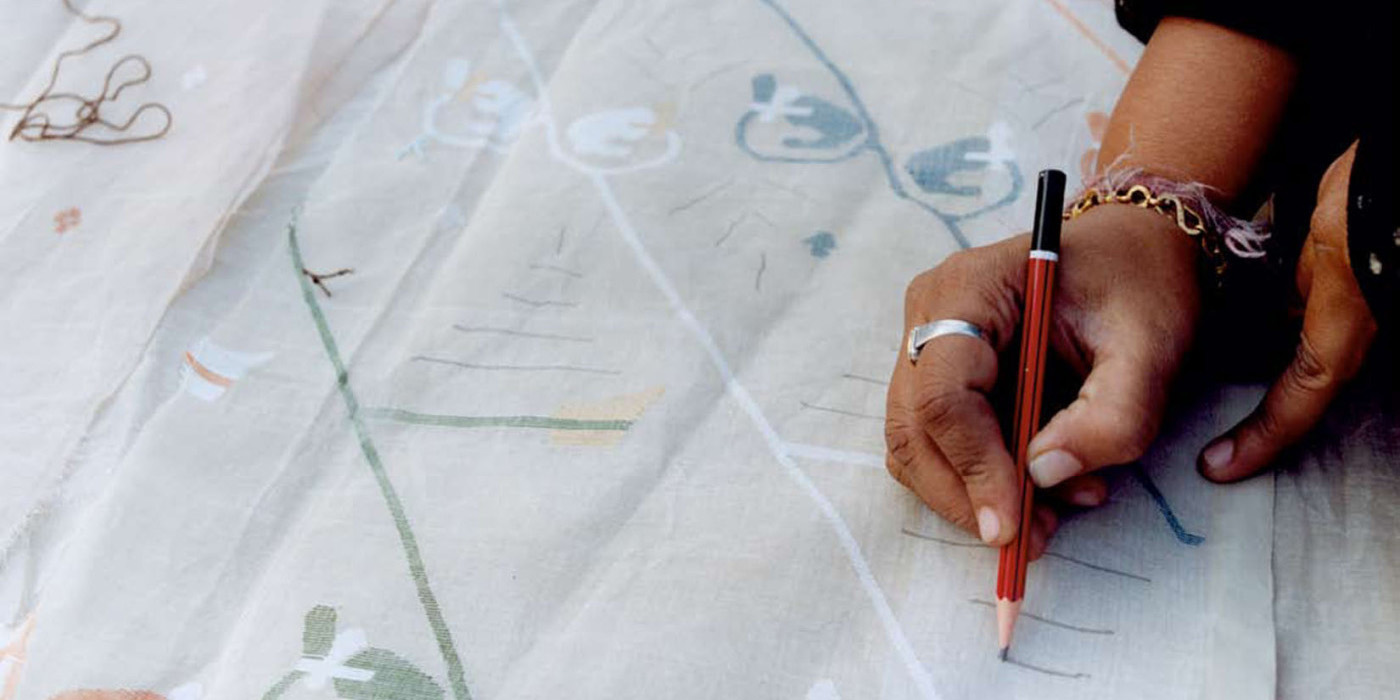
Jamdani weaving in Bangladesh (Image Ismini Samanidou, 2009)
Artisanal work is a practice that relies on hand skills to produce distinctive objects on a small scale, outside the industrial system. Promoting artisanal production by working with skillful artisans and prioritizing the handmade is a good alternative to the “$5 t-shirt” industry that is responsible for alarming overproduction and waste. Since the 1960s, drastic changes have affected the fashion industry, shifting from small made-to-order and artisanal runs to globalized and highly industrialized collections in order to reach lower prices, sell more, and make more profit. This phenomenon has led to a severe loss of value and quality of garments. Quality of craftsmanship is a key component to ensure the lasting value and durability of our clothes. “Slow Fashion” takes its inspiration from the concept of “Slow Food,” a movement started in Italy by Carlo Petrini in the late 1980s that encouraged a sustainable agriculture with slower production schedules, fair wages for the farmers and lower carbon footprints. American fashion brands such as dosa by Christina Kim, one of the three designers presented in SCRAPS: Fashion, Textiles and Creative Reuse, Alabama Chanin, a label founded by Natalie Chanin, and Study NY directed by New-York-based designer Tara Saint James, all embrace a similar way of designing and producing clothing.
Christina Kim has indexed a variety of artisanal techniques, textiles, people, and organizations and has shared this list on dosa’s website in the form of a beautifully illustrated glossary. Each entry includes a picture, a short description, indication of geographical origin, and tells how it entered the company’s history. This approach not only provides better quality and longevity to the garments, but it also changes the dynamics between designers, makers, and users and raises awareness of the craft of clothes-making.
About the Author
Magali An Berthon is a textile researcher and designer, focusing in particular on world textile crafts and sustainable fashion. After an MFA in textile design in Paris, she studied textile history at the Fashion Institute of Technology NY on a Fulbright fellowship in 2014. Since June 2015, she is a curatorial fellow at the Textile Department at Cooper Hewitt, Smithsonian Design Museum.
Scraps Stories
This post is part of the blog series Scraps Stories dedicated to exploring sustainable textiles and fashion, in relation to the exhibition Scraps: Fashion, Textiles, and Creative Reuse.

2 thoughts on “Green Glossary: A for Artisanal”
Julia on September 19, 2016 at 4:26 pm
This challenges me to think about wearing and using only repurposed and hand made textiles.
Magali An Berthon on September 20, 2016 at 1:05 pm
It is a challenge, indeed! Perhaps it makes it easier to consider this shift as a process, more than a radical change. It’s more about reassessing our relationship to clothes and textiles, and progressively implementing sustainable practices.